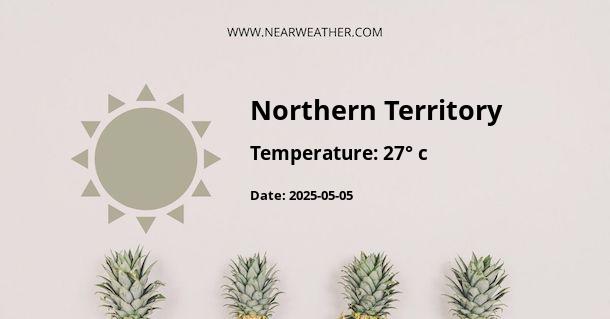Climate and Weather in Northern Territory, Australia
The Northern Territory is a vast and diverse region located in the northern-central part of Australia. It is known for its unique landscapes, including the iconic Uluru and Kakadu National Park. The climate in the Northern Territory varies significantly across the region, with distinct weather patterns and conditions throughout the year.
Overview of the Climate
The Northern Territory experiences a tropical climate in the north and a desert climate in the central and southern parts of the region. The climate is characterized by two distinct seasons: the wet season and the dry season.
The wet season typically occurs from November to April, during which the region receives the majority of its annual rainfall. This season is marked by high humidity, frequent thunderstorms, and occasional tropical cyclones. The wet season brings lush greenery and vibrant wildlife to the region, making it an ideal time for nature enthusiasts and bird watchers.
The dry season, on the other hand, extends from May to October. This season is characterized by lower humidity, clear skies, and cooler temperatures. The dry season is the most popular time to visit the Northern Territory, as the weather is more pleasant for outdoor activities such as hiking, camping, and exploring the natural wonders of the region.
Temperature Range
The temperature in the Northern Territory can vary greatly depending on the season and location within the region. In the wet season, temperatures can range from 25°C (77°F) to 33°C (91°F) in the northern coastal areas, with higher temperatures experienced inland. During the dry season, temperatures are milder, ranging from 20°C (68°F) to 30°C (86°F) in the north and slightly cooler in the central and southern parts of the region.
However, it is important to note that extreme temperatures are not uncommon in the Northern Territory. In some parts of the region, temperatures can exceed 40°C (104°F) during the hottest months of the year, especially in the desert areas.
Rainfall Patterns
Rainfall in the Northern Territory is highly variable and influenced by the monsoon season. The wet season brings the majority of the region's annual rainfall, with some areas receiving over 1,000 millimeters (39 inches) of rainfall during this time. The coastal regions and areas near the Top End experience the highest levels of rainfall, while the central and southern parts of the region receive much less precipitation.
During the dry season, rainfall is significantly reduced, and the region experiences long periods of drought. This lack of rainfall, combined with high temperatures, contributes to the arid conditions in the central and southern parts of the Northern Territory.
Extreme Weather Events
The Northern Territory is prone to various extreme weather events, including tropical cyclones, thunderstorms, and bushfires. Tropical cyclones can occur during the wet season and can bring heavy rain, strong winds, and storm surges. These cyclones have the potential to cause significant damage to infrastructure and pose a risk to human safety.
Thunderstorms are also common during the wet season, and they can produce intense rainfall, lightning, and strong winds. These storms can lead to flash flooding and localized damage to property and infrastructure.
Bushfires are a significant concern during the dry season when vegetation is dry and susceptible to ignition. High temperatures, dry winds, and lightning strikes can all contribute to the spread of bushfires, posing a threat to both the environment and communities.
Best Time to Visit
The best time to visit the Northern Territory largely depends on individual preferences and the activities planned. The dry season, from May to October, is generally considered the most favorable time to visit, as the weather is more comfortable and there is less risk of extreme weather events.
During the dry season, visitors can enjoy outdoor activities such as hiking, camping, and exploring the national parks and iconic landmarks of the region. The clear skies also make it an ideal time for stargazing and experiencing the breathtaking sunsets that the Northern Territory is renowned for.
However, some travelers may prefer the wet season for its unique experiences, such as witnessing the dramatic thunderstorms and observing the lush vegetation and wildlife that thrive during this time. It is important to note that some areas may be inaccessible during the wet season due to flooding and road closures.
Conclusion
The Northern Territory, Australia, offers a diverse climate and weather patterns throughout the year. From the tropical north to the arid central and southern regions, there is something for everyone. Whether you prefer the dry season's pleasant temperatures or the wet season's vibrant landscapes, the Northern Territory has a lot to offer in terms of natural beauty and unique experiences.
It is important to plan your visit according to your preferences and take into account the potential for extreme weather events. Be prepared for the varying conditions and make the most of your time exploring this captivating region of Australia.
A - Northern Territory's Latitude is -20.000000 & Longitude is 134.000000.
A - Weather in Northern Territory is 29° today.
A - Climate Conditions in Northern Territory shows clear sky today.
A - Humidity in Northern Territory is 24% today.
A - Wind speed in Northern Territory is 14 km/h, flowing at 89° wind direction. today.
